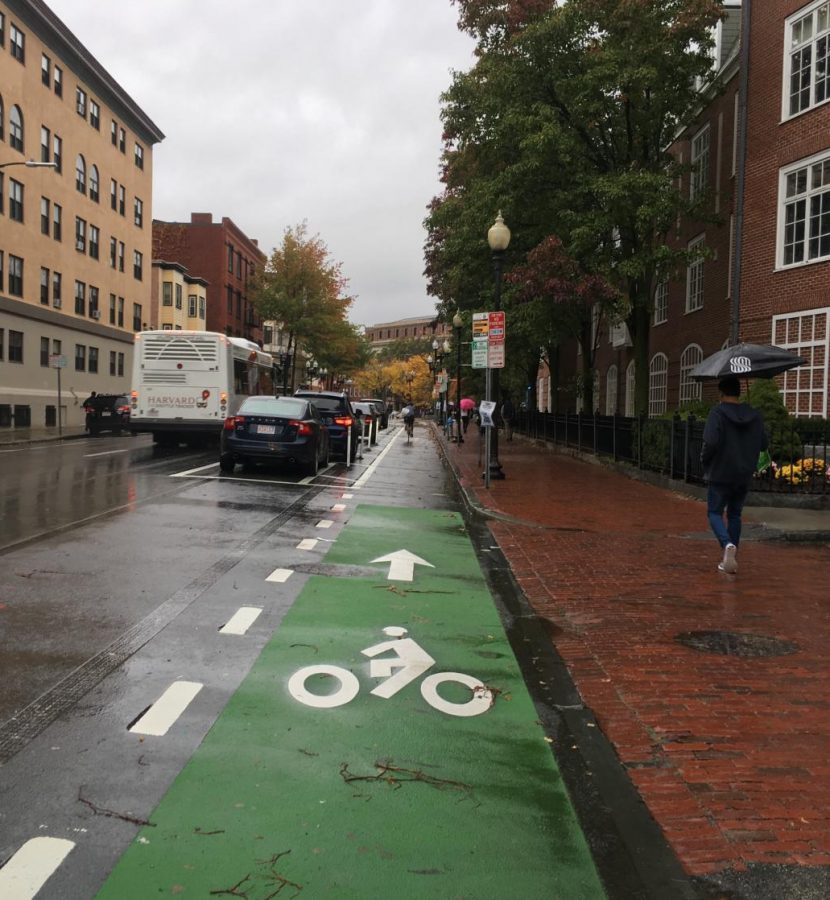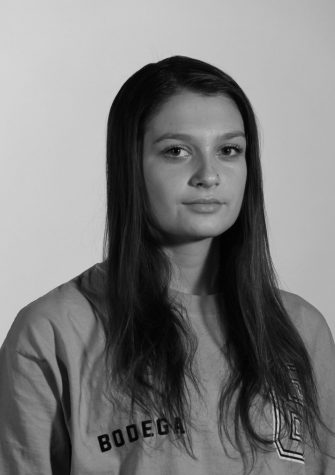Conversation about Protected Bike Lanes Continues
A bike lane outside of Harvard Square allows bicycles to have a separate place to ride but takes away from space on the street for cars.
October 30, 2017
On October 10th, the Neighborhood and Long Term Planning Committee, a branch of the City Council, held a meeting “to discuss and receive feedback on bike safety related issues.” Many Cambridge residents spoke at this meeting, some for the new protected bike lanes and some against. The Committee cut the meeting short after two and a half hours, with three hours of testimony still to go. 20 minutes in, they had to take away the speaking list to stop people from adding any more names.
Small businesses such as Skenderian Apothecary, a family owned business on Cambridge Street, spoke out against the lanes. They argued that the narrowed streets were an inconvenience for everyone using the road.
According to Robert Skenderian, the parking spots were made “the minimum width they need to be.” He told the Register Forum that the width is suitable for his Prius, but not for larger cars. “If you have a handicapped van,” says Skenderian, “Or a minivan with … sick kids, you’ll be getting out into the travel lane.”
The narrowed streets also pose a problem for large vehicles driving by, such as ambulances. On some streets, bump-outs have been installed with the intention of slowing traffic and making the streets safer for bicyclists. However, cars now have to find side streets to get out of the path of ambulances instead of merely pulling over.
On Cambridge Street, this is seen as especially problematic considering the nearby hospital. Skenderian argues that the bump-outs are an inconvenience for both drivers and bikers because “you create … essentially a funnel that pushes the bikes and the cars and the emergency vehicles closer together … giving a greater chance of having an accident.”
Ezra Rudel ‘19, a founding member of the Bicycle Advocacy Group at CRLS, agrees that the width of the streets are a potential inconvenience to vehicles, but says that the real issue is the sheer number of cars. He cites the example of Rindge Avenue, a narrow street without any bike lanes that becomes completely gridlocked during rush hour.
Junior Max Katz-Christy adds, “What it seems like to me is that … we’re going in a certain direction, [and] at a certain point, cars are just going to make no sense.”
Rudel argues that bump-outs are beneficial for narrow streets. In addition to slowing traffic, they also help ambulances turn corners more quickly since they prevent cars from parking too close to the corner.
He also recognizes that streets with bike lanes, bump outs, and bus stops “take up too much space and inconvenience a lot of people,” but says that with the resources and time available to the city for the construction, it was the best they could come up with. He adds that “it is more important that they are here now and imperfect as opposed to two years later and better designed.”
For a while, the city engineers didn’t listen to input from Cambridge residents, according to Skenderian. The October 10th meeting was one of the first times the city opened the issue of bike lanes up for discussion.
From the apparent tension of the meeting, he is hoping that city employees realize that what they have done is not as efficient as they thought it would be, and that they will focus on achieving an end product that benefits both parties equally. Skenderian concludes, “The road shouldn’t benefit one group [over] another.”
This piece also appears in our October print edition.











